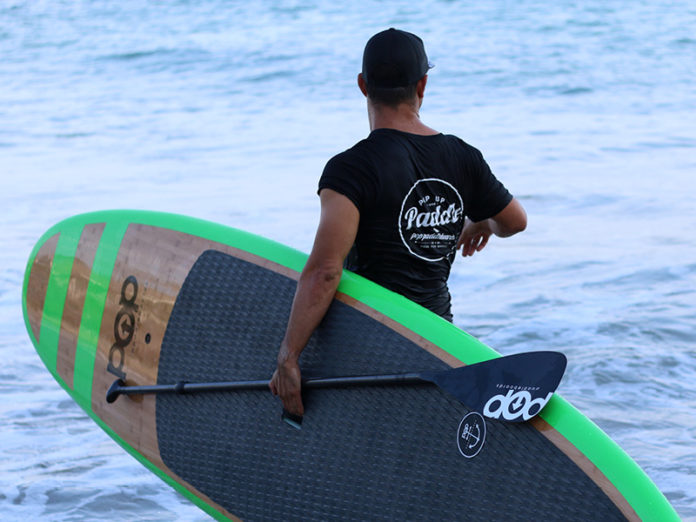
Stand up paddling is the leisure activity turning lakes, rivers and ponds into surf towns from Hope to Hamilton. It can be exciting, relaxing, scary or serene, depending on where you toss your board. The equipment itself is minimal, yet not inexpensive, and you have a choice of hard or soft boards to get you working out on water. Those terms are relative, as once inflated correctly, both boards are rigid enough to keep a solid floatable platform on which to get you totally stoked.
Before you crack open you’re wallet or run into some slick board-selling dude, here is what you need to know:
- Hard boards are fiberglass epoxy or carbon fibre and are solid pieces of surf artistry.
- Soft boards are inflatable, made of hardened rubber, heavy-duty PVC layers of urethane and polymer.
Both board types float and paddle well. Hard boards are a little faster, provide more stability and are more agile. Inflatables are more forgiving and softer for those times during the learning process where you find yourself at odds with gravity and bouncing off the surface of the board. For beginners the difference between a properly inflated board and a hard board is negligible.
For the recreational SUP user, board choice comes down to the questions of how you will use your board, how will you transport your board and how confident are you on your board. Then there’s storage.
On ponds, lakes or lazy rivers, there are no differences. Both boards are magic. Rougher water, rapids or surf are made for the hard boards’ sleek solid lines and agility.
Transport is a hands-down winner for the inflatable. It can roll into pack size for hiking to the water, throwing in your trunk or storing in your closet at home. The hard board is a tad harder to transport for all the obvious reasons — vehicles, roof racks, and straps…
If you are sure, confident and capable of steering around rocks, roots and your slower partners, the hard board is your choice. If you have a tendency to bump rocks, docks and anything else that comes in your vicinity, the inflatable is a far more forgiving option and will save you a ton on “ding” repairs.
Storage? Own an inflatable and unless you brag about it, no one will know you SUP. Own a hardboard and you have 9 to 12 feet of artwork in your home or garage for all your friends to see.
Inflatables, most often constructed with a ding resistant, puncture proof, outer skin will withstand daily abuse. Inflatable SUPs are ideal for families, rentals, boaters and travelling adventurers because they deflate and roll up to the size of a sleeping bag. Costs range from $800 to $2,200.
Hardboards offer choices of width and thickness in the classic long board style made with combinations of wood, epoxy and/or carbon. A pleasure to paddle in the flat water and super fun in rivers and small surf too. Epoxy construction makes the board durable and lightweight, so it’s easy to transport and maneuver both on and off the water.
Costs range from $800 to $3,500.
OK water babies, it’s time to get up, stand up and paddle on!
Board With Fitness
- Paddling an SUP is not only fun, it delivers some amazing fitness benefits.
- From your shoulders to your toes, an array of firing synapses guarantee the majority of your body is involved in an SUP workout.
- Staying upright on a board develops balance and builds core stability.
- Moving the board forward improves strength and muscular endurance. Want a double workout? Try paddling against the current.
- Unless something goes horribly amiss, SUP is the definition of low impact exercise.
- While exercise will improve your SUP, SUP will not drastically improve your exercise, but it is at once refreshing and restorative. It is soothing, calming and invigorating all at once.


















